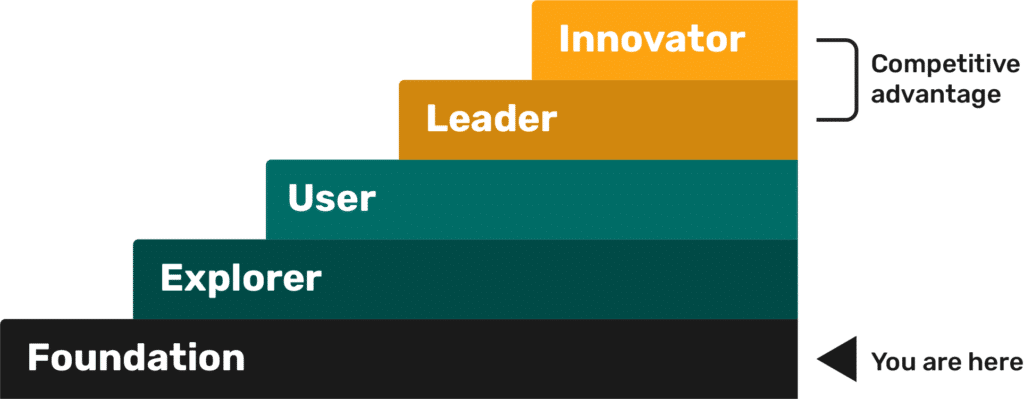The systematik data maturity framework helps organizations better understand where they are in their data journey and where they want to be in the future. The guide below shows what your results mean and how our experience can improve and increase your data capability.

There is no shame in being at the foundation stage of data maturity as it shows you are acknowledging it as something you need to invest in and develop. As you don’t have complex architectures and bad practices in place, it can be far easier to fix the problem.
Organizations in the foundation stage do not typically have a robust strategy for integrating data with existing business functions and UTM. Like many businesses, data is stored across disparate platforms, creating significant barriers to data collection and generating accurate insights. Without a strategy in place, there can often be a lack of governance around data processes. For example, google tag manager (GTM) tags may not be configured appropriately, naming conventions are not standardized, and formatting rules are not followed.
Many data processes, such as CRM data entry and extraction into excel from content management systems (CMS), are still manual. The average error rate in manual data entry is 1%, but that can increase rapidly with more complicated processes. Any error can result in inaccurate reporting, leading to poor and wrong business decisions.
When a business produces data that lacks accuracy and is prone to error, senior teams find it hard to trust the insight for decision-making. Instinct is trusted over data meaning they will either be lucky or wrong.
“Most entrepreneurs make decisions by either guessing or using their gut. They will be either lucky or wrong.”
– Suhail Doshi, chief executive officer, Mixpanel.
Organizations in the foundation stage can be slow to produce insight as reporting is the responsibility of a single person and the process to cleanse, manipulate, and analyze data is tedious. As geoffrey moore rightly says, “without big data, you are blind and deaf in the middle of a freeway.” Investment in technology and people to manage the data processes must be forthcoming for future success.
The data does not flow into a central store or warehouse at this stage, meaning a “single source of truth” is not always viable, resulting in a lack of trust in the data.
The systematik team of experts can offer a 100% free no-obligation thirty-minute strategy session call to start guiding you along your data maturity journey. Contact the team today to see how we can help get your organization from where it is today to where you want it to be in the future and turn your data into a more valuable business asset.
From Montreal, by data nerds, with love